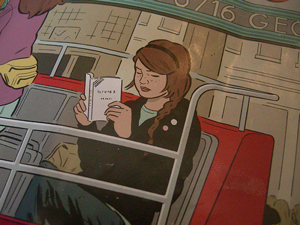
Source: Reading, dory cornfield, Flickr
You are always making connections when you read. Linking new text to what you’ve read or experienced in the past is part of how you make sense of new text. The setting of a story calls to mind images of similar places you have seen or read about. The theme of one work makes you recall something you read previously. An author introduces a character who reminds you of someone you know, read about, or saw in a movie. In this lesson, for instance, you will encounter characters who have something in common with Chillie, an old refrigerator who thinks he is about to be cast out, so he runs away to the scrapyard.
Source: CGI Animated Short HD: “Runaway” by Susan Yung, Emily Buchanan and Esther Parobek, The Cgbros, YouTube
You can organize connections into three different types:
- Text-to-self connections—where you link what you already know and your personal experiences to new text
- Text-to-text connections—where you associate what you’ve read before with the new text
- Text-to-world connections—where you draw on information from the larger world and historical and current events
The focus of this lesson is on the first type, text-to-text connections. In passages about comparable characters, you will see how one character’s plight can be similar to another’s. Through these characters, you will gain a broader insight into the human condition and learn what a cast of outcasts can teach us about kindness. You will come to see how making connections can improve your comprehension, broaden your thinking, and provide interesting perspectives for your own writing.